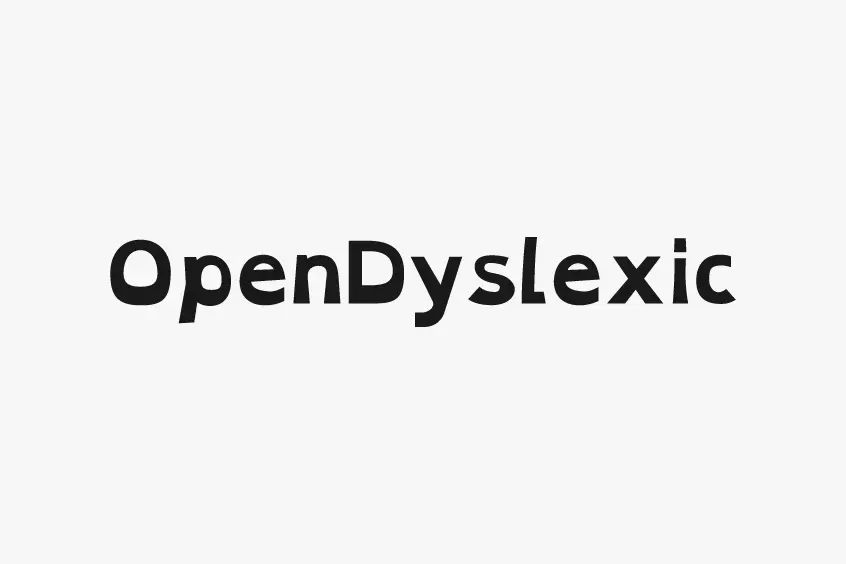About Open Dyslexic Font
Open Dyslexic Font is an open-source sans serif typeface that attends to facilitates dyslexic readers, created by Abbie Gonzalez. Its unique letterforms help in letter and word recognition.
Open Dyslexic Font has longer ascenders and descenders to better distinguish caps, lowercase, and similar lowercase letters. Bolder bottoms of letters to communicate orientation and better help differentiates between letters like “p q” “d b”. Similar to having an underlined 6 so the similar-looking 6 and 9 can be told apart in a game.
OpenDyslexic is free for personal use, business use, education, commercial, books, ebook readers, applications, websites, and any other project or purpose you need.



What is Dyslexia?
Reading learning is a complex skill that requires the conversion of graphic symbols (graphemes) into the corresponding sounds (phonemes) and involves the proper functioning of several neurocognitive functions and the activation of different brain regions. For the vast majority of children, learning to read develops relatively naturally, however, for others, this learning is particularly difficult. Among these are children with Developmental Dyslexia (hereinafter referred to as Dyslexia) who show specific changes in certain neurocognitive functions and a significant set of reading and writing deficits, leading, in most cases, to learning difficulties.
When we take children to school, so that they learn to read and write, we know that we are giving them the best tools for accessing knowledge and preparing their future. However, another dimension of this acquisition escapes us, which is the irreversible change that this cultural object will produce in the brain.
Reading is a relatively recent skill in the evolution of the human species, the acquisition of which requires a long period of explicit learning. This process, which can be particularly difficult and troubled, is in sharp contrast to the development of other mental functions, such as language that only needs minimal exposure to mature. However, once acquired, reading is an automatic and compulsive processing module, difficult to inhibit and very resistant to aging and degenerative diseases of the nervous system, and can even be used as a marker of previous or pre-morbid cognitive performance.
